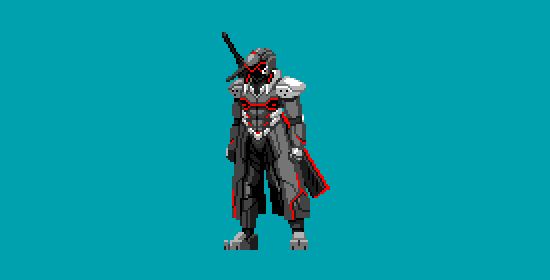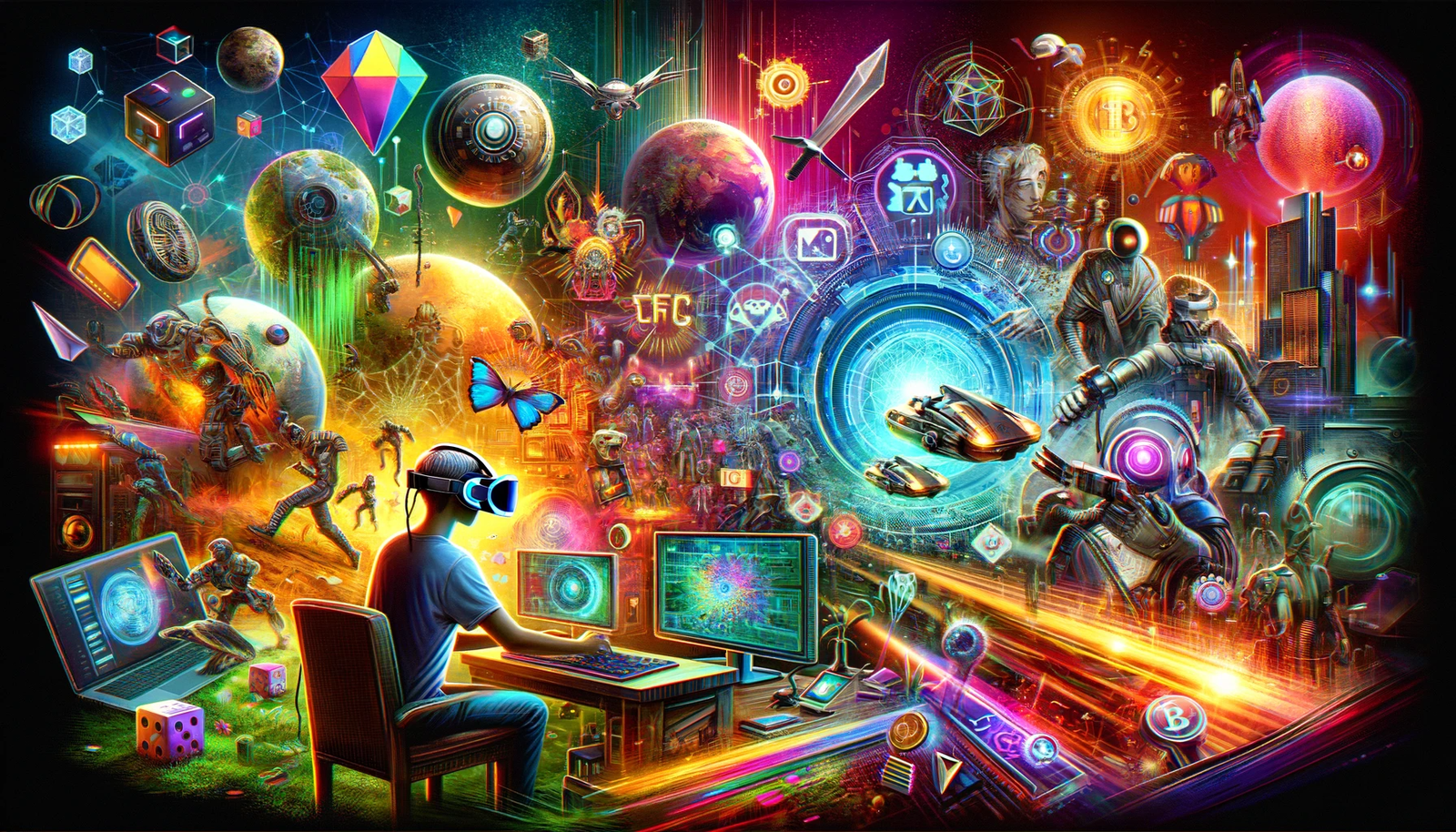Introduction
Game design is one of the most complex and evolving fields within the entertainment industry, and it combines a blend of creativity, technical knowledge, and psychology to produce captivating and memorable experiences for players. The world of gaming has evolved rapidly over the years, from early 2D pixelated games to stunning open-world adventures that allow players to lose themselves in expansive virtual environments. Yet, regardless of technological advancements, the core of game design has always remained focused on crafting experiences that deeply immerse players, pulling them into new worlds and giving them agency over their actions.
This article will explore the concept of immersion in game design, the processes behind creating a great game, and how game designers craft experiences that resonate emotionally with players. Along the way, we will break down the principles of good game design, answer some frequently asked questions (FAQs), and provide insights into how these elements come together to create exceptional gaming experiences.
Key Takeaways:
- Immersion is a key component of game design, achieved through compelling narratives, engaging mechanics, and sensory design.
- A strong narrative and rich world-building enhance the player’s emotional investment in the game.
- Gameplay mechanics should be intuitive, balanced, and rewarding to keep players engaged.
- Player agency, where decisions impact the story or game world, is essential for making the game feel meaningful.
- Playtesting is an ongoing process that helps refine gameplay and enhance the overall experience.
By focusing on these elements, game designers have the power to create experiences that are not just played, but truly lived by players.
The Essence of Immersion in Game Design

Immersion is often considered the holy grail of game design. It is the sense that players become fully engaged in the game world, forgetting about the real world as they navigate and interact with the environment. True immersion means the player doesn’t just play the game—they live it.
Immersive game design requires a multifaceted approach that integrates narrative, visual design, sound, gameplay mechanics, and player agency. Let’s explore the key factors that contribute to creating an immersive experience:
1. Narrative Design
A well-crafted story is a crucial component of immersion. Players want to feel connected to the world they are exploring and the characters they encounter. A compelling narrative creates emotional investment and keeps players motivated to continue their journey.
In some games, like role-playing games (RPGs) or adventure games, the narrative is central to the entire experience. A strong narrative can evoke a wide range of emotions—from joy and excitement to sorrow and tension. Games like The Last of Us or Red Dead Redemption 2 show just how deeply story can affect gameplay. These games intertwine their plot with player actions, giving players a sense of ownership over the events that unfold. In addition, the choices players make often impact the direction of the story, making it feel personal and consequential.
2. World-Building

World-building refers to the creation of the environment in which the game takes place. This encompasses everything from the geography of the game world, its history, the societies within it, and the rules that govern its systems.
A well-designed game world needs to feel alive, not static. It should feel like it has existed long before the player arrived and will continue to evolve even after the player leaves. Think of the expansive open-world games like The Witcher 3 or Skyrim, where the world feels vast and rich, filled with lore, places to explore, and cultures to discover.
Creating a world that feels real requires attention to detail. The visuals, sound design, and even the way NPCs (non-playable characters) interact with the player help create an atmosphere that feels unique and immersive. For example, a game with a fantasy setting might feature medieval-style castles and towns, while a sci-fi game might showcase futuristic cities and alien landscapes. The world should make sense within its own context, providing the player with an environment they can lose themselves in.
3. Gameplay Mechanics
Gameplay mechanics are the rules and systems that govern how players interact with the game world. These mechanics dictate how players perform actions, solve puzzles, engage in combat, and progress through the game.
When designing mechanics, it’s important to focus on making them intuitive and rewarding. For instance, combat mechanics in an action game should feel fluid and responsive. In games like Dark Souls, the combat is deliberate and challenging, making each encounter feel significant. In puzzle games like Portal, mechanics are centered around clever problem-solving and experimentation, creating a sense of satisfaction when players figure out a solution.
It’s also important to note the balance between challenge and reward. A game that is too easy will bore players, while a game that is too difficult can cause frustration. Good game mechanics make the player feel competent, challenged, and motivated to continue progressing.
4. Character Design and Development

Characters play a pivotal role in game design because they serve as the player’s avatar within the game world. A strong character design allows players to feel connected to the protagonist or any other playable characters. In games with deeply emotional narratives, such as The Last of Us or Mass Effect, character development is crucial for creating an emotional bond between the player and the story.
Character design goes beyond appearance—it also involves personality, motivations, and relationships with other characters. A good character should have goals, challenges, and a sense of growth. Characters should react in ways that make sense within the context of the narrative, which adds depth and realism to the experience. Players will invest more in a game if they care about the people they are interacting with, especially if the narrative encourages them to make tough moral choices.
5. Audio and Visual Design

The audio and visual aspects of a game have an enormous impact on the player’s level of immersion. Visual design, including everything from the game’s art direction to the smallest environmental detail, can instantly set the mood and tone of the game. A game with photorealistic visuals, like Red Dead Redemption 2, draws players into its world with stunningly detailed environments, lifelike character animations, and a sense of place that feels grounded in reality. On the other hand, stylized visuals like those seen in The Legend of Zelda: Breath of the Wild create an equally immersive experience through unique artistic design and world-building elements.
The audio design is equally important. Sound effects, ambient noises, and the musical score all contribute to the atmosphere. A horror game might use eerie, subtle sound effects to create tension, while an epic adventure game might feature orchestral music to build excitement. Music can tell the player when to feel excited, sad, or anxious, helping to steer emotional reactions without saying a word.
6. Player Agency and Interaction
One of the key components of an immersive game is the ability to give players a sense of agency, where their actions have an impact on the world around them. This is particularly important in role-playing games (RPGs) or open-world games, where the choices the player makes can change the course of the story or the game world.
In The Witcher 3: Wild Hunt, for example, players make decisions that shape Geralt’s relationships with others and influence the overall narrative. In some cases, a decision made early in the game can have significant repercussions later on, leading to different outcomes or even alternate endings.
Allowing players to explore, experiment, and interact with the game world in meaningful ways builds a sense of ownership and connection. Players feel more invested in the game when they see that their decisions and actions matter.
7. Pacing
The pacing of a game is crucial in maintaining player engagement. Just like a well-paced movie or novel, a game should know when to slow down and give the player time to reflect, and when to speed up to create excitement.
Good pacing keeps the player from feeling overwhelmed or bored. For example, after a tense combat sequence, the game might slow down to allow for character development or exploration. A game with poor pacing can either feel too slow and tedious or too rushed and chaotic.
The Role of Playtesting and Iteration in Immersive Design
Creating an immersive game is not a linear process; it requires constant testing, iteration, and refinement. Playtesting is crucial to ensuring that the game’s mechanics, narrative, and pacing all come together in a way that resonates with players. Playtests help designers identify areas that may be frustrating, unbalanced, or simply not engaging enough.
During the playtesting phase, designers gather feedback from players to refine the gameplay experience. Sometimes, even seemingly small adjustments—like tweaking a level’s difficulty or refining the camera angle—can make a huge difference in how immersive the game feels. This iterative process ensures that the final product is polished and engaging.
The Role of Game Designers

The role of a game designer is to bring together all of these elements into a cohesive whole. They’re responsible for shaping the player’s experience and ensuring that every aspect of the game supports the vision of immersion. Game designers often work in teams, collaborating with artists, programmers, writers, and sound designers to make sure that all components of the game align with the overarching goals.
- Level Design: One of the most critical tasks of a game designer is designing levels. This includes creating maps, determining objectives, placing enemies, and ensuring that the level provides the right level of challenge. Level design is all about pacing, balancing difficulty, and guiding the player through the experience without making them feel lost or overwhelmed.
- Balancing Mechanics: A designer must also ensure that the game’s mechanics are balanced. For example, a combat system should be challenging but fair. If a mechanic is too difficult or too easy, it can break immersion and frustrate players. Designers often test and tweak these mechanics, using feedback from playtesting to make adjustments.
- User Interface (UI) and User Experience (UX) Design: A game’s UI and UX design are crucial to immersion. A cluttered, confusing interface can distract players from the experience. Game designers must ensure that all menus, buttons, and icons are intuitive and don’t take players out of the experience. The key is to make these elements feel seamless and natural.
- Innovation: While many games use established conventions, great designers are always looking for ways to innovate. Whether it’s introducing new gameplay mechanics, creating unique narrative structures, or exploring new technology (like virtual reality), innovation can set a game apart from others.
The Evolution of Video Game Genres: From Arcade to Virtual Reality
| Era/Time Period | Game Genre | Key Games | Description |
|---|---|---|---|
| 1970s-1980s (Arcade Era) | Arcade Games | Pong, Space Invaders, Pac-Man, Donkey Kong | Simple, addictive gameplay with a focus on high scores and short game loops. Early genres: Shooters, Platformers. |
| 1980s-1990s (Early Consoles) | Platformers | Super Mario Bros., Sonic the Hedgehog | Side-scrolling games with jumping mechanics, where the player navigates obstacles and enemies. |
| Role-Playing Games (RPG) | Final Fantasy, Dragon Quest | Focus on character development, story, and turn-based combat. | |
| Action/Adventure | The Legend of Zelda, Metroid | Combines exploration, combat, and puzzle-solving with an engaging story. | |
| 1990s (The Rise of 3D) | 3D Platformers | Super Mario 64, Crash Bandicoot | Transition to 3D environments with new movement and exploration mechanics. |
| First-Person Shooters (FPS) | Doom, Quake, GoldenEye 007 | First-person combat games, focusing on fast-paced action. | |
| 2000s-2010s (Hybridization Era) | Action-RPGs | The Elder Scrolls V: Skyrim, The Witcher 3: Wild Hunt | Combines traditional RPG elements with real-time combat and open-world exploration. |
| Battle Royale | PUBG, Fortnite | Large-scale multiplayer games where players compete until one remains, with survival mechanics. | |
| Survival Horror | Resident Evil 7: Biohazard, Silent Hills (P.T.) | Combines survival mechanics with horror elements to create a tense, atmospheric experience. | |
| 2010s-Present (VR & AR Era) | Virtual Reality (VR) | Beat Saber, Half-Life: Alyx | Games designed for immersive VR headsets, where players physically interact with the virtual environment. |
| Augmented Reality (AR) | Pokémon GO | AR games overlay digital elements onto the real world, encouraging exploration and interaction. | |
| Future | Continued Hybridization | New genres and game designs that blend existing styles | With advancements in VR, AR, and AI, games will continue to merge multiple genres and offer deeper player interaction. |
- Video game genres have grown from simple arcade games to complex and diverse experiences.
- Genres like Action-RPGs, Battle Royale, and Survival Horror represent the hybridization of traditional gaming categories.
- Virtual Reality and Augmented Reality have opened new possibilities for immersive gameplay.
Creating Emotional Connections through Design
At its core, immersive game design is about creating an emotional connection between the player and the game. The best games don’t just entertain; they evoke real emotions. The sense of victory after a tough battle, the sorrow after a tragic loss, the thrill of solving a complex puzzle—these are all emotions that can be achieved through thoughtful game design.
1. Emotional Storytelling: Many players are drawn to games because of their stories. A game with a deep, emotional narrative can create a bond with players that lasts long after they’ve put down the controller. By creating relatable characters, impactful decisions, and compelling plots, game designers can elicit a wide range of emotions from players.
2. Sensory Engagement: A designer can use sensory elements, such as lighting, music, and sound effects, to evoke specific emotional responses. For instance, eerie music and dim lighting in a horror game can induce fear, while a triumphant orchestral score in a fantasy game can evoke feelings of heroism.
3. Challenging and Rewarding Gameplay: Games that challenge players in meaningful ways and reward them for overcoming obstacles create a sense of accomplishment. This is particularly evident in games that incorporate leveling up, gaining new abilities, or unlocking hidden content.
4. Player Investment: Designers must create situations where players are invested in the outcome. Whether it’s saving a character they’ve grown attached to or solving a puzzle to unlock the next level, the sense of progression and achievement is a powerful motivator.
Also Read : How Do RTS Video Games Revolutionize Strategy and Gameplay?
Conclusion
The art of game design is a delicate and nuanced craft that combines creativity, technical expertise, and an understanding of human psychology to create experiences that captivate players. Immersion lies at the heart of great game design, and it’s achieved through a combination of strong narrative, engaging gameplay mechanics, rich world-building, and sensory design elements like audio and visuals. Designers must constantly refine and iterate on their work, using playtesting and feedback to create games that resonate emotionally and mentally with their audience.
By balancing challenge, reward, and emotional connection, game designers can create worlds that players want to lose themselves in, experiencing unforgettable journeys and forging personal connections with characters and stories. Ultimately, game design is about making the impossible feel real and letting players experience the extraordinary.
FAQs
1. What makes a game immersive?
An immersive game is one where the player feels emotionally and mentally engaged in the world, characters, and storyline. This is achieved through strong narrative design, engaging gameplay mechanics, rich world-building, and sensory design elements like audio and visuals.
2. How important is narrative in game design?
Narrative is essential in many games, particularly those that focus on character development and emotional engagement. A well-crafted story gives players a reason to care about the world and the characters they encounter.
3. How do game designers balance difficulty in a game?
Designers balance difficulty by tuning gameplay mechanics to offer a challenge without overwhelming the player. This involves playtesting and adjusting mechanics such as combat, puzzles, and AI behavior to find a fair and rewarding experience.
4. What is the role of art direction in game design?
Art direction shapes the visual identity of a game. It influences how players perceive the world, characters, and story. The art style can make a game feel more immersive, whether through photorealism, stylized graphics, or abstract visuals.
5. How do player choices affect immersion?
Allowing players to make meaningful decisions within the game world increases their sense of agency and investment. When choices have real consequences on the story or world, players feel that their actions matter.
6. What is the difference between game design and game development?
Game design focuses on the creative aspects of a game, such as its mechanics, story, and world-building. Game development involves the technical process of programming and implementing these designs into a functioning product.
7. Can you learn game design on your own?
Yes, game design can be self-taught through online resources, tutorials, and practice. Many aspiring game designers start by creating their own small projects or modding existing games before moving on to larger projects.



